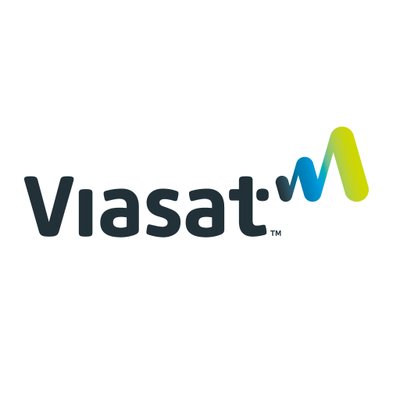Viasat WiFi Internet : A Comprehensive Review for 2020
22 October, 2024 | Posted by:
Category: Deals & Packages, Reviews, Internet, Service Providers | No Comments

Viasat, a prominent satellite internet provider, continues to make significant strides in the broadband industry. This article delves into the latest developments, offerings, and technological advancements by Viasat, highlighting how they are shaping the future of satellite internet.
New Satellites Launched: Viasat has successfully launched new satellites to enhance its network capacity and coverage. These satellites aim to provide faster and more reliable internet service, particularly in underserved and remote areas.
Improved Bandwidth: The new satellites are equipped with advanced technology to offer improved bandwidth, allowing for better performance even during peak usage times.
Global Coverage: The Viasat-3 satellite constellation promises near-global coverage, significantly expanding Viasat's reach. This initiative aims to connect even the most remote locations with high-speed internet.
Enhanced Speeds and Capacity: Viasat-3 is designed to deliver unprecedented speeds and capacity, ensuring that customers receive consistent and reliable internet service.
Unlimited Data Plans: Viasat now offers unlimited data plans, allowing users to enjoy high-speed internet without worrying about data caps. This is particularly beneficial for heavy internet users and households with multiple connected devices.
Affordable Options: To cater to a diverse customer base, Viasat provides a range of plans at various price points, ensuring that high-speed internet is accessible to more people.
Tailored Packages: Viasat offers specialized internet packages for businesses, providing reliable and high-speed connectivity essential for business operations.
Remote Work and Telecommuting: With the rise of remote work, Viasat's business internet solutions support seamless telecommuting, video conferencing, and cloud-based applications.
Smart WiFi: Viasat has introduced smart WiFi technology, which optimizes the distribution of internet bandwidth across devices. This ensures a stable and fast connection, even when multiple devices are connected simultaneously.
Advanced Security Features: Viasat's WiFi technology includes robust security features to protect against cyber threats, ensuring a safe online experience for users.
Hybrid 5G-Satellite Network: Viasat is exploring the integration of 5G technology with its satellite network. This hybrid approach aims to combine the strengths of both technologies, offering enhanced speed, reliability, and coverage.
Future Prospects: The integration of 5G and satellite technology is expected to revolutionize internet connectivity, providing ultra-fast speeds and low latency, even in remote areas.
Rural and Underserved Areas: Viasat's efforts focus on bridging the digital divide by providing high-speed internet to rural and underserved communities. This initiative aims to ensure that everyone, regardless of location, has access to reliable internet.
Educational Programs: Viasat partners with educational institutions to provide internet access to schools in remote areas, supporting online learning and educational resources.
Emergency Services: Viasat's satellite internet plays a crucial role in disaster response, providing connectivity in areas affected by natural disasters where traditional infrastructure is damaged.
Mobile Units: Viasat deploys mobile internet units to provide temporary connectivity in disaster-stricken areas, ensuring that emergency services and affected communities stay connected.
Viasat continues to push the boundaries of satellite internet technology, offering innovative solutions that enhance connectivity and accessibility. With its expanding satellite network, new service plans, and commitment to bridging the digital divide, Viasat is poised to play a significant role in the future of global internet connectivity.
News highlights and information related to Internet Service Providers, Television, and the world of Highspeed Broadband Internet.
21 October, 2024 | Posted by: Pablo Mendoza
Category: Cable, Deals & Packages, News, Service Providers | No Comments
.jpeg)
Stay updated with the latest happenings in the world of high-speed broadband internet, cable, and television. Here are some recent news highlights and information related to Internet Service Providers (ISPs).
Customers affected by the recent Spectrum outage for TV, internet, and phone services are eligible for refunds. Spectrum has acknowledged the inconvenience and is working to ensure better service reliability. To learn more, customers can call Spectrum’s customer service line or visit Spectrum Internet Plans.
Optimum cable announced a $20 increase in their cable rates starting July. As other companies adapt to the cord-cutting trend, Optimum opts to charge more. This might be a good time to explore alternative options like Comparing Some of the Best DSL Internet Service Providers.
New satellites launched last week aim to provide high-speed internet coverage across Alaska, addressing concerns about connectivity in the region. This development is part of a broader effort to improve internet access in rural and remote areas.
Recent findings suggest that the FCC's broadband maps are flawed. States are taking measures to accurately identify residents' access to high-speed internet, which is defined as speeds over 25 Mbps. Accurate mapping is crucial for targeting areas that need infrastructure investments. For more information on broadband technology, read The Success and Future of High-Speed Internet.
5G technology is rolling out, providing faster internet speeds and lower latency, particularly beneficial for urban areas. As 5G networks expand, they are expected to complement existing broadband infrastructure, offering high-speed internet even in densely populated areas. Discover the Success and Future of High-Speed Internet.
The broadband industry is rapidly evolving, with new technologies and initiatives aimed at improving accessibility and performance. Staying updated with these developments can help consumers make informed decisions about their internet services.
Keeping you up to date with High Speed Broadband Internet Providers updates news and information.
22 October, 2024 | Posted by: Pablo Mendoza
Category: Apps, Business Internet, Cable, Entertainment, Gaming, Deals & Packages, News, Reviews, Internet, Service Providers, Streaming, Technology, This & That, Tips, TV | No Comments

Staying informed about the latest developments in high-speed broadband internet is essential. This guide highlights recent news and updates from the industry, focusing on innovations, accessibility, and significant events.
The deployment of satellites by companies like OneWeb and SpaceX has continued to expand, aiming to provide global high-speed internet access, particularly targeting rural areas. These efforts aim to bridge the digital divide, ensuring even remote areas can access high-speed internet. Additionally, HughesNet and Viasat are enhancing their satellite networks to remain competitive.
Recent reports indicate that over 42 million Americans still lack access to high-speed internet, a significant issue impacting their ability to stream content, work remotely, and perform other online activities effectively. This gap highlights the ongoing need for infrastructure improvements and broader accessibility initiatives. To understand more about the differences in internet connectivity, check out Evaluating Your Options: DSL, Cable, Satellite, and Fiber Internet.
The FCC's Rural Digital Opportunity Fund, now exceeding $20 billion, continues to be a pivotal initiative aimed at bringing faster internet to underserved areas across the United States. This fund is expected to create jobs, enhance opportunities, and improve internet access for millions of Americans, significantly impacting rural communities. Learn more about What Internet Speed is Right for You?.
Spectrum recently experienced a significant service outage affecting internet, television, and phone services in several Northeast states due to severe weather conditions. This outage left many customers without connectivity over the weekend, underscoring the importance of robust infrastructure to handle extreme weather events. For tips on improving your internet speed, visit How to Increase Your Internet Speed.
The broadband industry is rapidly evolving, with new technologies and initiatives aimed at improving accessibility and performance. Staying updated with these developments can help consumers make informed decisions about their internet services.
Did you know that gaming might be the primary reason why your data runs out early every month? This is especially true if you’re a competitive gamer who downloads and plays the latest titles.
24 October, 2024 | Posted by:
Category: Gaming, Service Providers | No Comments

Did you know that gaming might be the primary reason why your data runs out early every month? For competitive gamers, managing data effectively is crucial. Here are some strategies to help you save data while gaming online with Rise Broadband.
Downloading new games consumes a significant amount of data. For instance, a single game like GTA V can use up around 66 GB. Instead, consider purchasing games on Blu-ray or ask friends with extra bandwidth to download them for you.
Game companies regularly release patches and downloadable content (DLC) that can drain your data cap quickly. Ensure automatic updates are turned off to save data.
Plan your downloads to use leftover data at the end of the month, maximizing your data usage without exceeding your limit.
Rise Broadband’s economy plan offers a minimum of 150 GB of data at 5 Mbps, suitable for regular gaming. However, for more extensive gaming and streaming, consider upgrading to a 10 Mbps plan with 250 GB of data.
By following these strategies, you can enjoy a better gaming experience without worrying about running out of data. For more internet service options, visit KonectEaze.
If you live in the United States, choosing a DSL internet service can be quite tricky. Moreover, the speed of your connection will heavily depend on your specific location.
24 October, 2024 | Posted by:
Category: Service Providers | No Comments

Digital Subscriber Line (DSL) remains a relevant choice for internet service, particularly in regions where cable and fiber are not available. This guide will evaluate major DSL providers, including AT&T, Verizon, and CenturyLink, comparing their services, speeds, prices, and customer satisfaction.
DSL technology leverages existing telephone lines to deliver internet connectivity. While it generally offers slower speeds compared to newer technologies like fiber, it can still support most online activities such as streaming, gaming, and downloading.
DSL is a viable option where fiber and cable aren't available, offering a balance between cost and functionality. When choosing a provider, consider specific needs such as speed requirements and service reliability. AT&T, Verizon, and CenturyLink each have strengths that may suit different user needs, from higher speed potential with AT&T to the extensive coverage of CenturyLink.